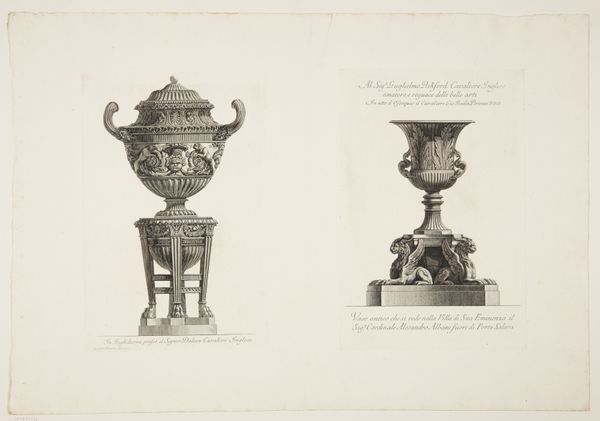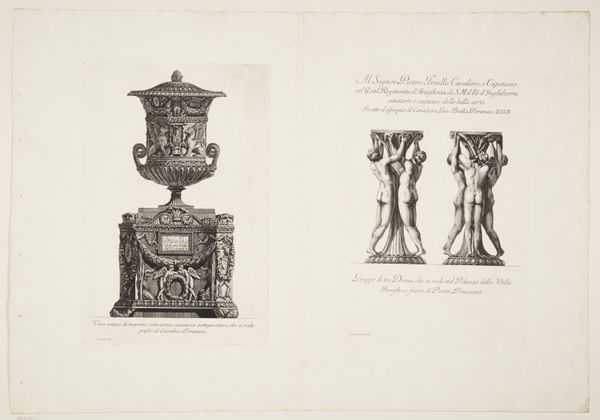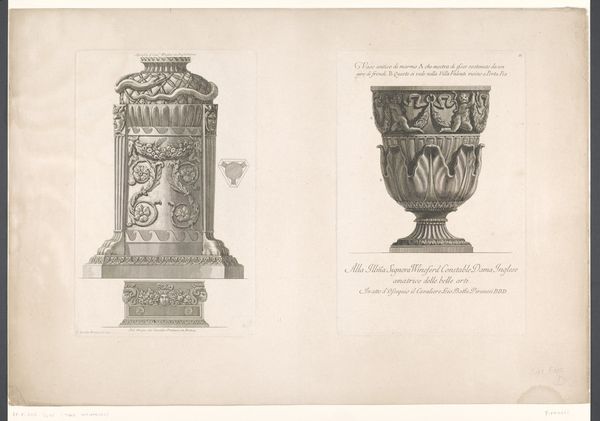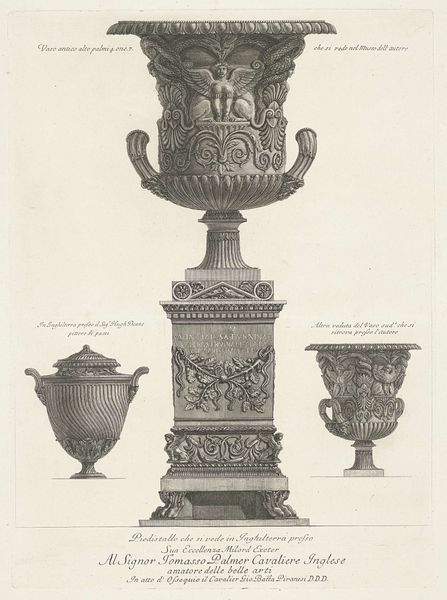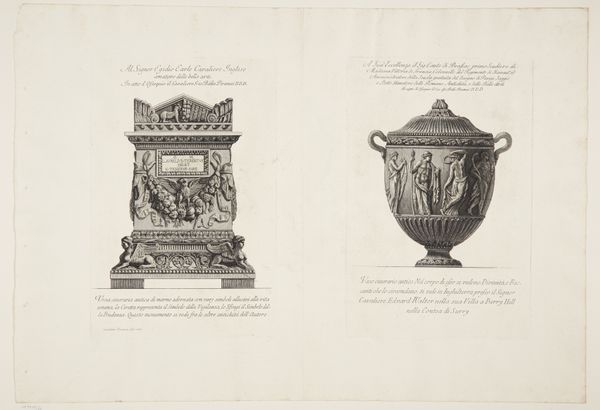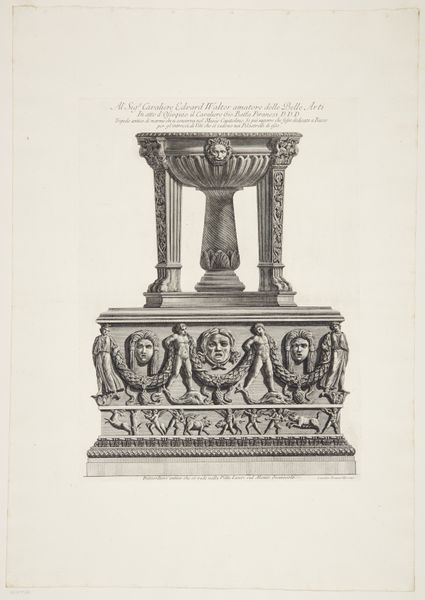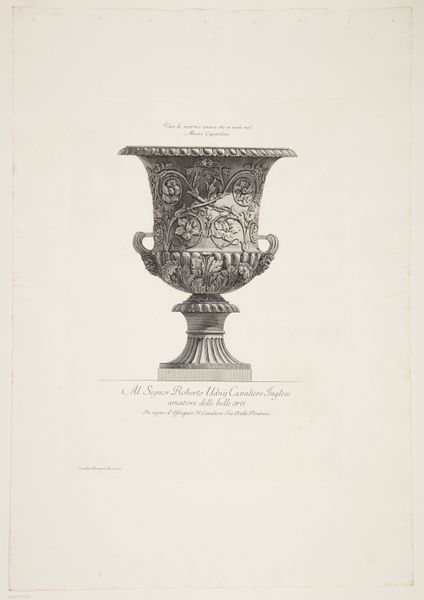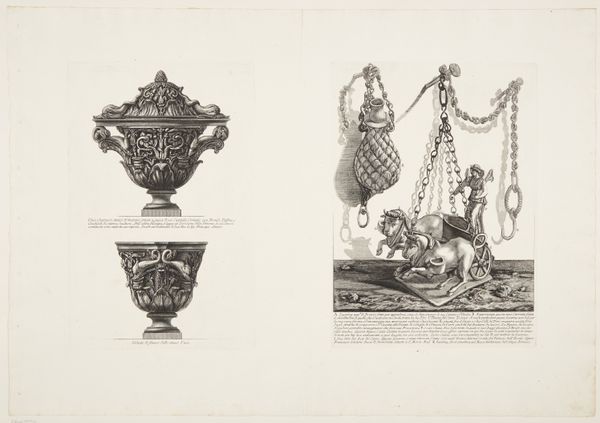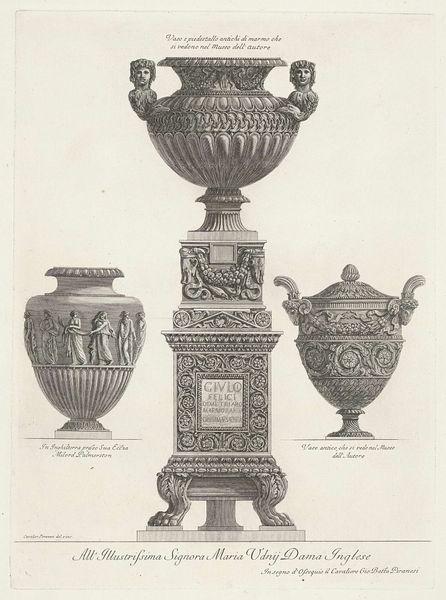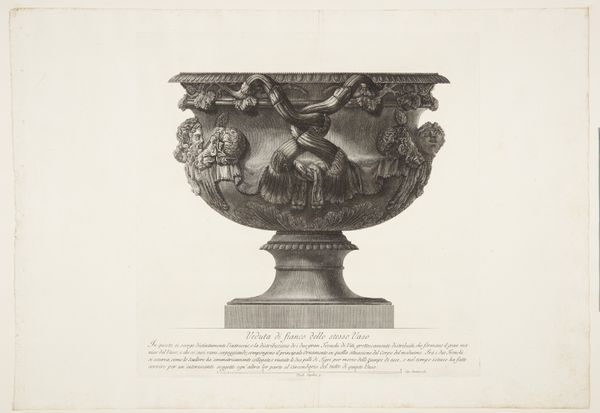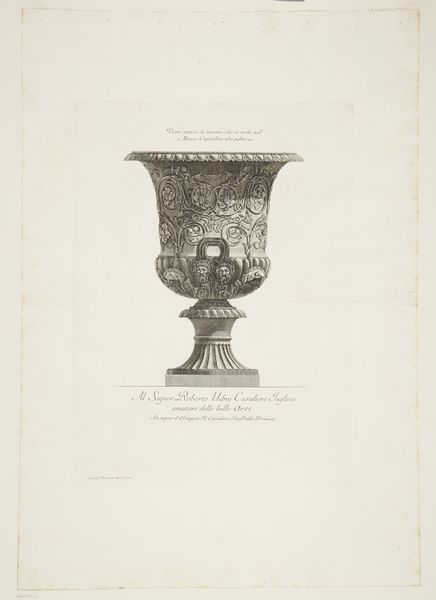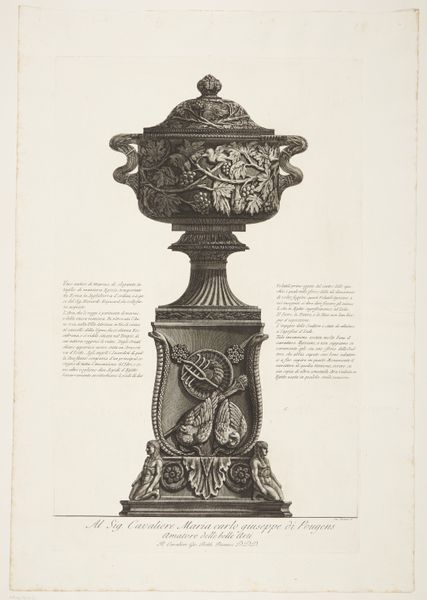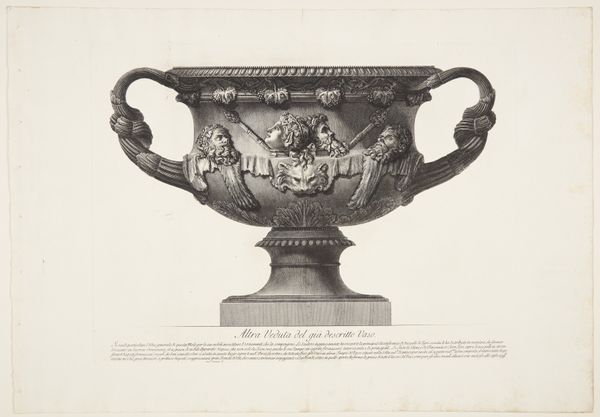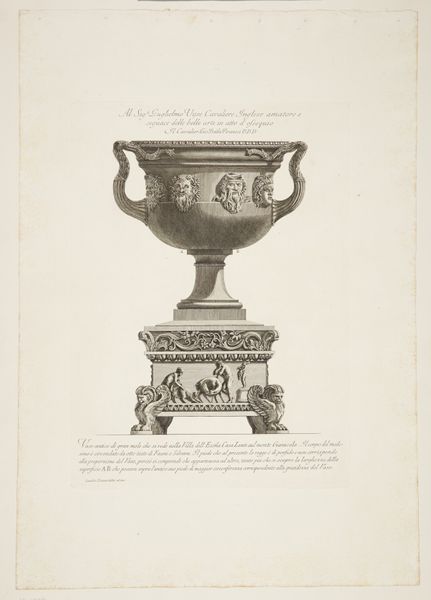
Cinerary vase of terracotta with a sea horse in relief, from a drawing by Cavalier Ghezzi in the Vatican Library, and a marble tripod with vine leaves on the legs and spiral central support 1769 - 1778
0:00
0:00
drawing, print, metal, etching, engraving, architecture
#
drawing
#
neoclacissism
# print
#
metal
#
etching
#
old engraving style
#
history-painting
#
engraving
#
architecture
Dimensions: 554 mm (height) x 792 mm (width) (bladmaal)
Editor: Here we have Giovanni Battista Piranesi’s engraving, dating from 1769 to 1778, depicting a terracotta vase and marble tripod. The detail is incredible, it feels like a catalogue entry almost. What’s your take on this pairing? Curator: This print highlights the commodification of antiquity that was prevalent in the 18th century. Piranesi isn't just documenting artifacts; he's participating in creating a market for them, influencing taste and demand. Consider the materials: terracotta, marble – these aren’t simply artistic choices. Editor: How so? Curator: Think about where these materials come from, who’s extracting them, and the labor involved in shaping them into these highly ornate objects. The print flattens all of that, presenting them as readily available commodities, divorced from their messy origins. Don’t you agree that there is more than meets the eye when considering the availability of materials like marble, for example? Editor: That's a fascinating point. I was focused on the classical forms and Neoclassical style, but looking at it through the lens of production… Curator: Exactly. And it begs the question, who could afford such items? Piranesi's engravings made these objects accessible, visually at least, to a broader audience, fueling the desire for classical antiquity among the wealthy. Editor: So, it’s less about appreciating the art and more about understanding its role in a network of production and consumption. Curator: Precisely. We learn about the object, the artist, and the audience all at once. That opens up our understanding of the print beyond mere representation. Editor: This gives me a whole new perspective, I’ll definitely remember to ask about labor and the economics behind artworks from now on. Curator: Remember, everything from pigment to presentation is deeply embedded in the world of making and buying.
Comments
No comments
Be the first to comment and join the conversation on the ultimate creative platform.
